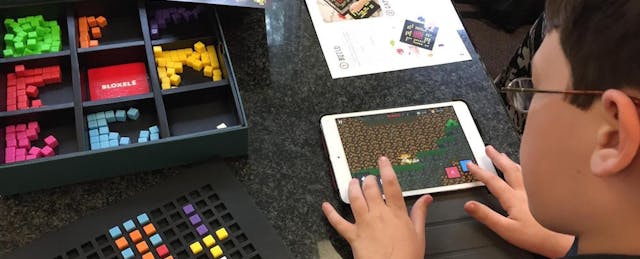It’s a new world: the digital and tangible are merging, and educators need to help students navigate the changing terrain. The solution? Let them be Makers.
I’ve been involved in digital learning and education technology for more than 30 years, and the burgeoning attempt to merge the digital and physical worlds has been one of the most interesting aspects of the evolution of EdTech to date. Managing that change in a Making context that encompasses digital tools, hands-on construction, creation and interaction allows students to learn and create new knowledge experientially. It gives them the ability to conceptualize new ideas and invent solutions for unexpected problems.
It’s no longer enough—if it ever was—for teachers to lecture to a row of desks; today’s teacher must be more of a coach. The task now is to help students understand what they need to know, strategize about what they need to do next and engage in critical problem-solving—all while helping them understand how information in the arts, sciences and mathematics fit together.
See, Understand, Make
There are several evolving spaces in which we are seeing the blending of the digital and physical successfully fostering critical thinking, communication, collaboration and creativity.
- Perhaps most obviously, 3D printing is enabling students to imagine, design, problem-solve and create in the digital domain, and the outcome of their work is a product they can hold in their hands.

2. Micro-controllers in the form of Arduino and Raspberry Pi boards extend traditional electronics and circuitry work to the digital world. With traditional construction and engineering tools students, can now add sensors, solar panels, power and movement.

3. Digital storytelling takes the traditional story or report-writing assignment and moves it to an entirely new place. Students outline their stories and then add voice, images and video that they have created and captured. The end product is a personal multimedia story of learned curriculum.

4. Augmented reality is beginning to expand for students. What started with QR Codes now defines the merging of digital and tangible learning. Students interact in virtual worlds with virtual reality platforms and viewers, and work within content with computer-enhanced images.


Today’s Makers Solve Tomorrow's Problems
There are challenges in navigating this emerging territory. We have to balance the promise and power of the digital with the skills and gifts of the human, allowing students to partner with the digital while living meaningful human lives in the “real” world. We have to ensure that all students are able to learn and grow in a digitally enabled environment. And cost is an issue, although in this day and age digital technology arguably is affordable even for a modestly funded school.
We can tackle these obstacles. And we should given the potential rewards. By engaging in Making, today’s students and tomorrow’s may well find solutions to the global challenges facing our world.


